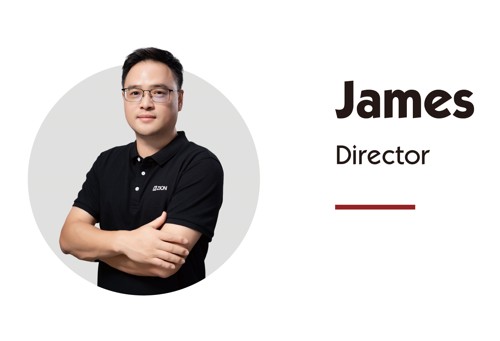Cable & Wire | High quality and excellent service at reasonable prices.
info@zion-communication.com
Author: James Publish Time: 14-07-2025 Origin: Site
ADSS (All-Dielectric Self-Supporting) fiber optic Cable is mostly used for overhead installations in power transmission and telecom networks. When it comes to selecting the best ADSS cable, one of the things that every engineer needs to consider is the core count — usually, it can be either 12, 24, or 48 cores. The different number of cores to be counted corresponds to different network capacity, installation environment, and budget.
The following guide will offer you insights into how ADSS core types are structured, what they are applied for, and which core types are recommended for your projects. Armed with this knowledge, you can then determine which core type suites your projects best.
The core count is the particular number of fiber optic strands located in the fiber optic cable. Each fiber is able to send data alone. Moreover, there exists a relationship between cable core count and the number of channels or connection points. This is a key factor in large networks and in case of future cable upgrades.
Use Case:
Perfect for rural broadband, village level FTTH deployment, gas and electric field management, railway, and utility networks.
Key Features:
Lightweight
Easy mounting
Short distance with less fibers, best for subscriber distribution or access networks.
Applicable for spans up to 200 m
Recommended Models:
➤ Category: 12-core, PE sheath (for up to 100m length)
ZC-ADSS-12B1-PE-200M
➤ Another enhancement of tensile strength at 200m span.
ZC-ADSS-12B1-AT-300M
➤ AT sheath known for the installation on 35kV power lines.
Typical Installation Scenario:
When overhead lines (11kV) run through bushes and fields or very little capacity is required.
Use Case:
Municipal networks, campus links, solar PV system networks, or any other setups which require data redundancy.
Key Features:
A structural design combining a balanced count of core and mechanical strength.
Moderate length (up to 300 meters) span support
Functionality of more or less service channels than redundancy.
Recommended Models:
➤ PE outer layer, designed to perform well for spans less than 200m.
ZC-ADSS-24B1-PE-300M
➤ Enforced aramid yarn will contribute to the reinforcement of the intermediate span.
ZC-ADSS-24B1-AT-400M
➤ 66kV lines (high-voltage-resistant AT jacket) for 400m.
Typical Installation Scenario:
Installed 13.8 to 66kV overhead transmission lines, providing strong and reliable communication links.
Use Case:
Built for high-bandwidth routing and large-scale backend of:
Inter-city
Backbone
Power grid SCADA/Protection System
Key Features:
Supports both high-fiber density and long-line.
A thick aramid yarn reinforcing force is for tensile strength.
Commonly used in 500m and beyond even within high voltage environment.
Recommended Models:
➤ 48-core PE sheath PE cable, for spans up to 300m.
ZC-ADSS-48B1-AT-500M
➤ AT jacket version 220kV voltage environment up to 500HF.
ZC-ADSS-48B1-AT-800M-HeavyDuty
➤ Major strength design for long spans crossing water bodies and valleys.
Typical Installation Scenario:
Over spanning rivers wide, valleys or urban zone places, or trenching is not allowed or pertinent and where lots of connections are needed.
Core Count | Project Scale | Application Type | Span Length | Recommended Voltage Line |
12 Core | Small scale / Access | Rural FTTH, local monitoring | ≤200m | ≤11kV |
24 Core | Medium scale | Substation, campus, smart grid | ≤300m | 13.8–66kV |
48 Core | Large scale / Backbone | Power grid, intercity, 5G network | ≤500m+ | 66–220kV or above |
When selecting ADSS cables, consider not just the core count, but also:
Span Requirement: Tension normalized as per the span requirement.
Environmental Conditions: For example, in areas of the high-voltage lines AT sheath is used. While the standard aerial spans are made of PE.
Installation Method: Take off-steer thrust along with wind loading into account.
Future Capacity: Increasing border count of fiber is advised over estimate if you expect the growth of the network.
Zion Communication is a professional fiber optic cable manufacturer whose ADSS cables cover the following fields:
Core Counts: 2–144 core options
Jackets: PE and AT (Anti-tracking sheath)
Span Design: ranges 50m to more than 1000m.
Voltage Adaptability: Suitable for low voltage up to ultra-high voltage.
We support:
Cable custom printing
Get technical inputs for installation.
Complete documentation like product spec sheets and test report.
For a customized quote or our catalog, please contact us directly.
Q1: What about the wind factor with 48-core ADSS cable?
Yes, but it may be excessive in terms of cost and capacity unless you're planning for future scalability.
Q2: What are the sheath differences between PE and AT in ADSS cable?
PE: This is for everyday environments that is ≤12 kV power lines.
AT (Anti-tracking): this is for high voltage lines above 35kV, it helps to prevent electrical dis-charge damage.
Q3: How long is the delivery turnaround?
Standard lead time is 7–15 working days depending on quantity and customization.

James is a technical manager and associate at Zion Communication.
Specializes in Optical Fiber communications, FTTH Solutions,
Fiber optic cables, ADSS cable, and ODN networks.
james@zion-communication.com
+86 13777460328
ADSS Fiber Optic Cable Technical Q&A Checklist
ADSS Cable vs. OPGW Cable- Key Differences and Applications Explained
How to Select the Right ADSS Cable for Your Project | ADSS Fiber Cable Selection Guide
ADSS Fiber Optic Cable Specifications Explained | Structure, Performance & Parameters
ADSS Cable Price Factors: What Affects Cost & How to Choose the Best Value Cable
ADSS Cable Installation Accessories for Aerial Fiber Deployment
